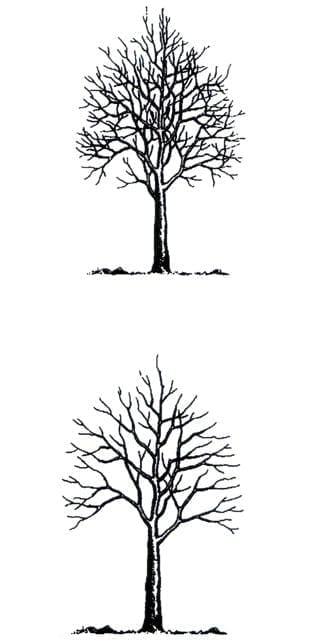Formative pruning is the initial pruning of a young tree to develop a balanced shape with strong branches that will support heavy fruit crops. The aim is to develop an open, balanced network of strong, unshaded branches above the height of grazing livestock and machinery. Prune trees to the shape and style of those found locally. The amount of pruning will vary according to the variety and rootstock of the fruit tree. Stone fruits do not respond as well to continuous pruning and should be pruned as little as possible, some level of formative pruning should be applied to all fruit trees from one year old and continued for four to five years.
It is usually best pruning deciduous trees during winter, as it is easier to see the branch structure. Tree trimming of evergreens is often carried out in April, as their spring regrowth begins. However, there are exceptions to these rules and a professional tree surgeon will be able to advise on the most suitable season and both the amount and method of tree pruning for your species.
If you have any questions about formative pruning or anything else please contact us. We will be more than happy to help.

